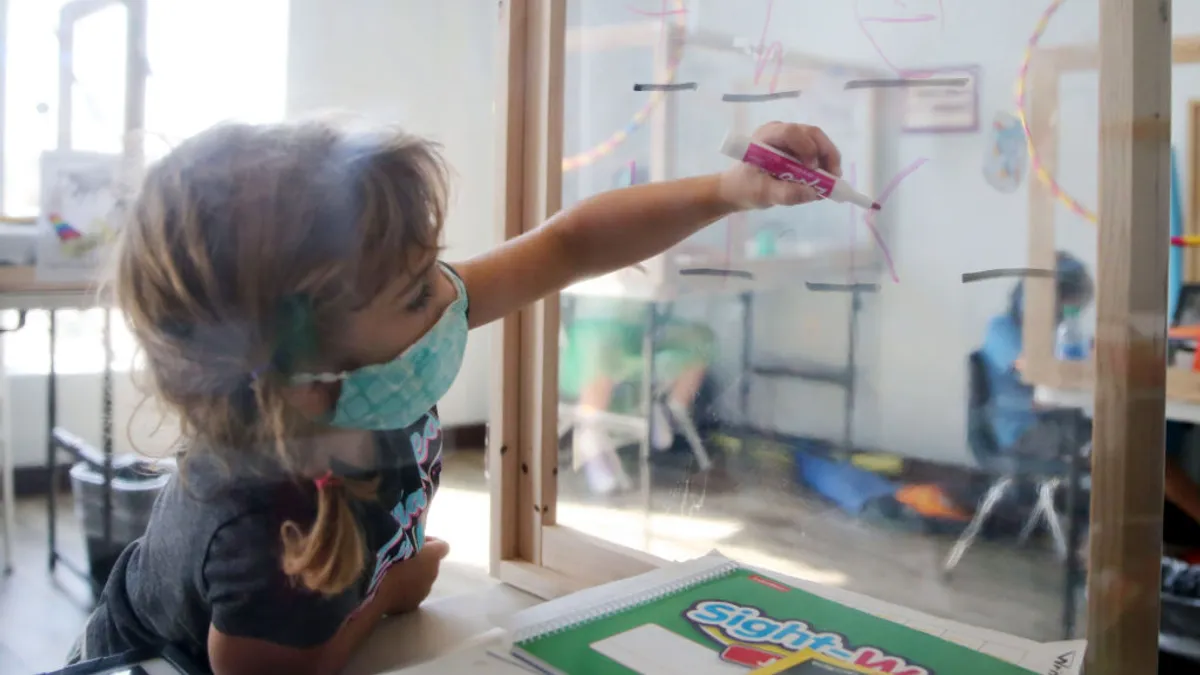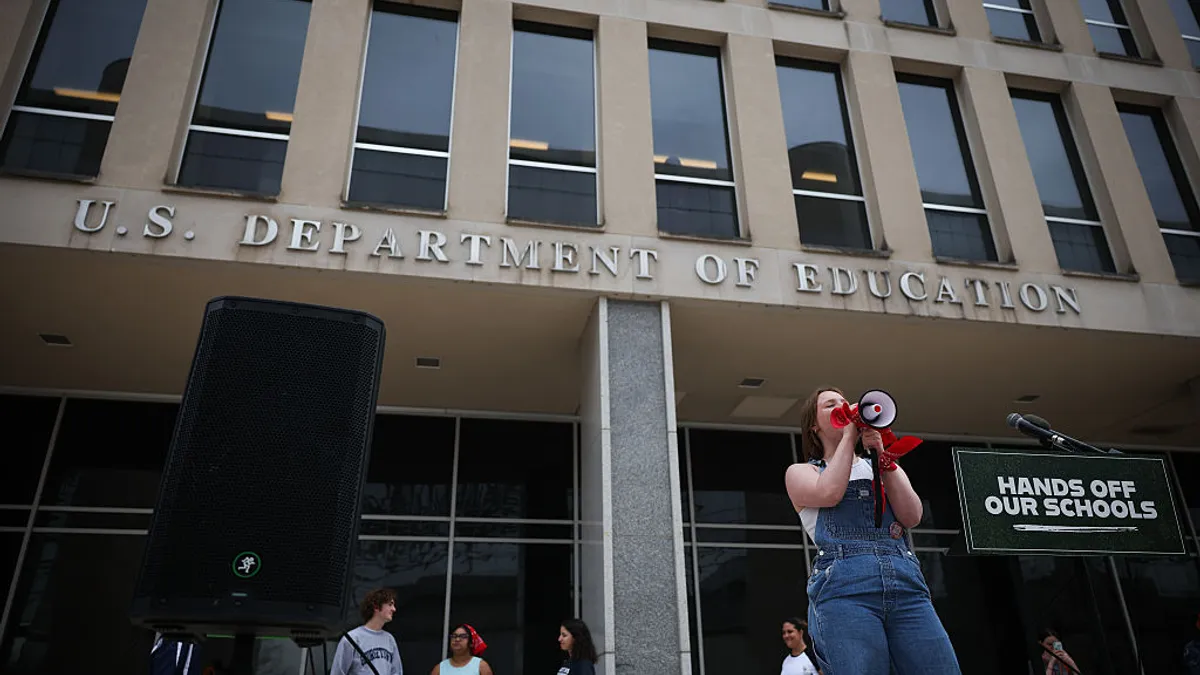In Missouri's Saint Louis Public Schools, district officials provided free public transportation passes or $75 weekly gas cards to families whose school bus routes were temporarily suspended due to bus driver shortages.
In Leander Independent School District in Texas, officials have adjusted school day start and end times in order to minimize transportation delays, after driver shortages and traffic congestion led to late arrivals on campuses last school year.
And in Alaska's Anchorage School District — the largest school system in the state — students will use a rotating bus schedule with three cohorts of students alternating a schedule of three weeks of transportation with six weeks of no transportation.
"All options remain on the table, including school start times, as the effect could free up more drivers," Anchorage Superintendent Jharrett Bryantt wrote to district families and staff in an Aug. 26 letter.
As national school bus driver shortages continue to hamper districts' efforts to bring students to campuses for in-person learning and activities, school systems are trying creative — and sometimes unpopular — solutions.
Anchorage's rotating bus schedule is only a temporary solution as it hopes to add more commercial licensed bus drivers in the coming weeks. The district is offering new drivers a $2,500 starting bonus and has teamed up with local and state transportation officials to improve traffic flow on local streets to prevent school bus delays. It has also partnered with Joint Base Elmendorf-Richardson to have active duty military staff transport students who attend school on base, Bryantt's letter said.
Nationally, one of the most common bus driver vacancy solutions is to increase driver pay and benefits. A RAND Corp survey released this summer found 30% of district leaders said their school systems increased pay and benefits for bus drivers in 2021-22. That number rose to 46% for high-poverty districts.
A study conducted at the University of Albany in New York, based on interviews with 301 participating drivers across 32 New York school districts, found pay and benefits were key reasons drivers would stay in or leave their jobs. Drivers were more likely to say they would stay in their jobs if they viewed their jobs as meaningful and significant, the study said.
Additionally, Frontline Research and Learning Institute found that there was a 22.6% increase in job postings per district for transportation service positions between 2020 and 2021.
Some districts resorted to enlisting school or district staff to drive buses, the RAND Corp survey found.
"Unfortunately, pupil transportation does not have any flexibility to adjust variables as a way to manage the shortage. Canceling a flight, while inconvenient, isn’t on the same scale as canceling a bus route."

Curt Macysyn
Executive director of the National School Transportation Association
The dire situation of late buses due to lack of bus drivers has caused some districts to conduct audits, adopt efficiencies and implement certain technology, such as routing software and apps that allow parents to monitor the exact location of buses while en route.
Leander ISD, for instance, planned a district-wide rollout in August of the SMART Tag system that gives parents, administrators and transportation staff real-time data for when individual students get on and off their buses based on live GPS locations.
North Carolina's Wake County Public Schools uses the Here Comes the Bus app, which also allows parents and school officials to track student ridership and lets parents receive push notifications for when the bus is close by. The district had warned the school community that more school buses will run at full capacity and have longer travel times. Buses also may bring some students to campuses a full 40 minutes before classes begin.
Why there are shortages
Student transportation is not immune to employment market conditions, said Curt Macysyn, executive director of the National School Transportation Association, a membership organization for school bus contractors.
"Nationally, we have seen airlines have to cancel flights due to pilot and staffing shortages, and we have seen other service industries reduce hours in order to function properly," Macysyn said in an email. "Unfortunately, pupil transportation does not have any flexibility to adjust variables as a way to manage the shortage. Canceling a flight, while inconvenient, isn’t on the same scale as canceling a bus route."
Macysyn said NSTA is heading up efforts at creating a more school-bus-specific path to getting a commercial driver’s license, because the current system that has people trained and tested on areas specific to motor trucks can be a disincentive to applicants solely interested in being a local school bus driver.
Using routing software and adjusting school bell schedules are effective methods for ensuring students have access to school buses, which is the preferred method of transportation, Macysyn said. That's because the National Highway Traffic Safety Administration says school buses are the safest mode of transportation in getting students to and from school.
Rick Grisham, president of the National Association for Pupil Transportation, a membership organization for student transportation service providers, said while the school bus driver shortage is significant, it's a problem that pre-dates the pandemic.
“The school bus driver shortage is not a new issue, and yet there is an immediate and deeper need from pupil transportation professionals to respond to it with innovative and existing tactics in order to provide students the safety, security, and normalcy that they all so deeply crave and deserve since the start of the COVID-19 pandemic," Grisham said in an Aug. 10 posting on the association's website.
The association offered advice to districts struggling to have enough drivers. It said districts should communicate early and often about any transportation problems. Parents should be calm and patient and set a good example to their children. Businesses and organizations should be empathic to the challenges working parents face during the school year.
For everyone else, the association suggested they consider becoming a bus driver.








 Dive Awards
Dive Awards














